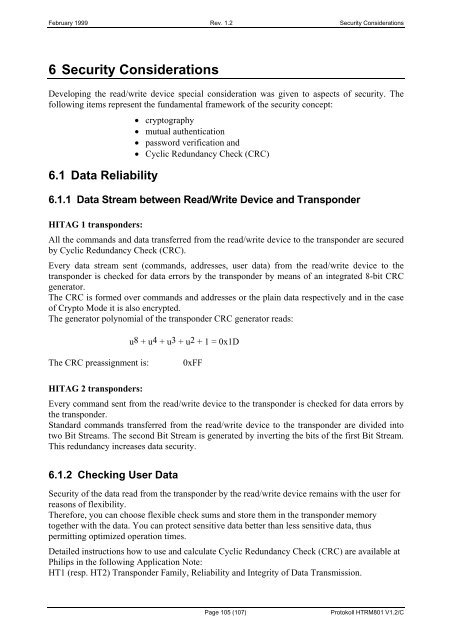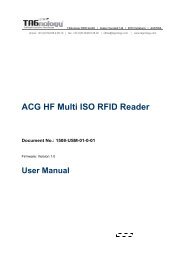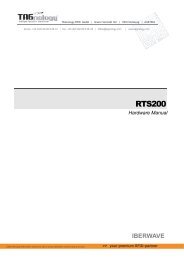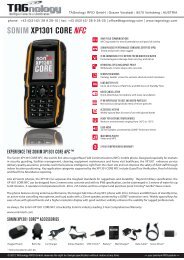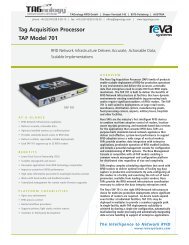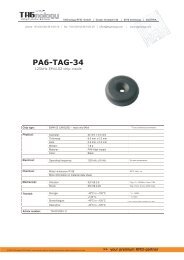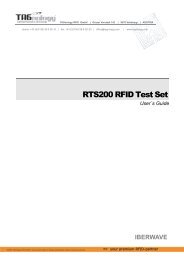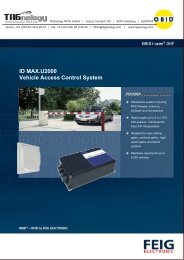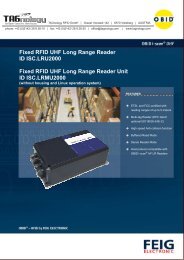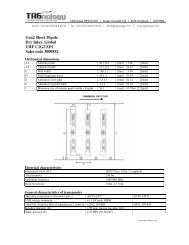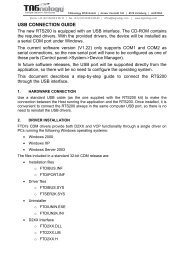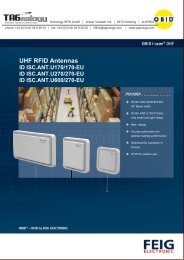TAGnology_TAGid -125kHz_Protocol.pdf - RFID Webshop
TAGnology_TAGid -125kHz_Protocol.pdf - RFID Webshop
TAGnology_TAGid -125kHz_Protocol.pdf - RFID Webshop
You also want an ePaper? Increase the reach of your titles
YUMPU automatically turns print PDFs into web optimized ePapers that Google loves.
February 1999 Rev. 1.2 Security Considerations<br />
6 Security Considerations<br />
Developing the read/write device special consideration was given to aspects of security. The<br />
following items represent the fundamental framework of the security concept:<br />
6.1 Data Reliability<br />
• cryptography<br />
• mutual authentication<br />
• password verification and<br />
• Cyclic Redundancy Check (CRC)<br />
6.1.1 Data Stream between Read/Write Device and Transponder<br />
HITAG 1 transponders:<br />
All the commands and data transferred from the read/write device to the transponder are secured<br />
by Cyclic Redundancy Check (CRC).<br />
Every data stream sent (commands, addresses, user data) from the read/write device to the<br />
transponder is checked for data errors by the transponder by means of an integrated 8-bit CRC<br />
generator.<br />
The CRC is formed over commands and addresses or the plain data respectively and in the case<br />
of Crypto Mode it is also encrypted.<br />
The generator polynomial of the transponder CRC generator reads:<br />
u8 + u4 + u3 + u2 + 1 = 0x1D<br />
The CRC preassignment is:<br />
0xFF<br />
HITAG 2 transponders:<br />
Every command sent from the read/write device to the transponder is checked for data errors by<br />
the transponder.<br />
Standard commands transferred from the read/write device to the transponder are divided into<br />
two Bit Streams. The second Bit Stream is generated by inverting the bits of the first Bit Stream.<br />
This redundancy increases data security.<br />
6.1.2 Checking User Data<br />
Security of the data read from the transponder by the read/write device remains with the user for<br />
reasons of flexibility.<br />
Therefore, you can choose flexible check sums and store them in the transponder memory<br />
together with the data. You can protect sensitive data better than less sensitive data, thus<br />
permitting optimized operation times.<br />
Detailed instructions how to use and calculate Cyclic Redundancy Check (CRC) are available at<br />
Philips in the following Application Note:<br />
HT1 (resp. HT2) Transponder Family, Reliability and Integrity of Data Transmission.<br />
Page 105 (107)<br />
Protokoll HTRM801 V1.2/C


